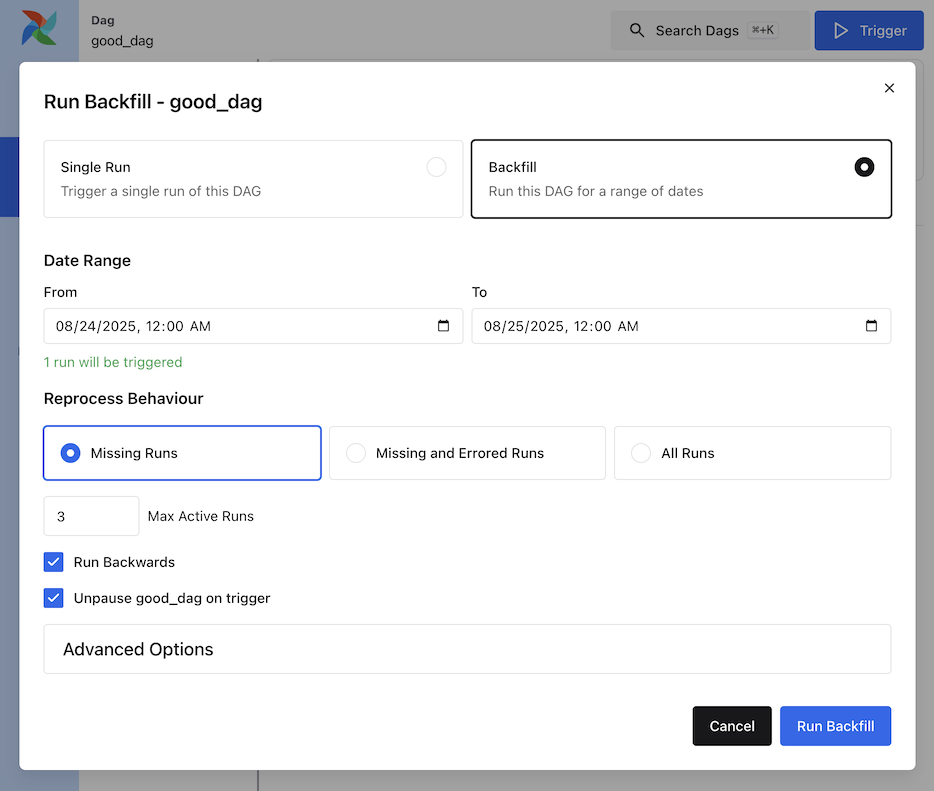Backfill
Backfill is when you create runs for past dates of a Dag. Airflow provides a mechanism to do this through the CLI and REST API. You provide a Dag, a start date, and an end date, and Airflow will create runs in the range according to the Dag’s schedule.
Backfill does not make sense for Dags that don’t have a time-based schedule.
Control over data reprocessing
There are three options for reprocessing behavior:
none - if there’s already a run for this logical date, do not create another, no matter the state
failed - if a run exists, if the state is failed, create a new run for this date
completed - if a run exists, if the state is completed or failed, create a new run for this date
If the latest run is still running or is queued, we do not create another run, no matter the chosen reprocessing behavior.
Concurrency control
You can set max_active_runs on a backfill and it will control how many Dag runs in
the backfill can run concurrently. Backfill max_active_runs is applied independently
the Dag max_active_runs setting.
Run ordering
You can run your backfill in reverse, i.e. latest runs first. The CLI option is --run-backwards.
Dry run
Backfill dry run is a CLI option that will print out the dates that the backfill will consider creating runs for. Whether or not they will be created depends on your chosen reprocessing behavior and the states of any existing runs in the range at the time you actually run the backfill.
Example
Backfill can be created from either the CLI or the UI.
For CLI, below is an example command:
airflow backfill create --dag-id tutorial \
--start-date 2015-06-01 \
--end-date 2015-06-07 \
--reprocessing-behavior failed \
--max-active-runs 3 \
--run-backwards \
--dag-run-conf '{"my": "param"}'
For UI, follow the following steps:
Navigate to a Dag’s Details page and click Trigger.
In the pop-up window, select Backfill.
Fill in the form:
Date range: set “From” and “To” logical datetimes for the backfill window.
Reprocess behavior: choose one of
Missing Runs,Missing and Errored Runs, orAll Runs.Max active runs: limit concurrent backfill runs for this backfill.
Run backwards: execute most recent intervals first.
Advanced Config: optionally provide JSON
dag_run.conf.If the Dag is paused, you can Unpause it in the same window.
